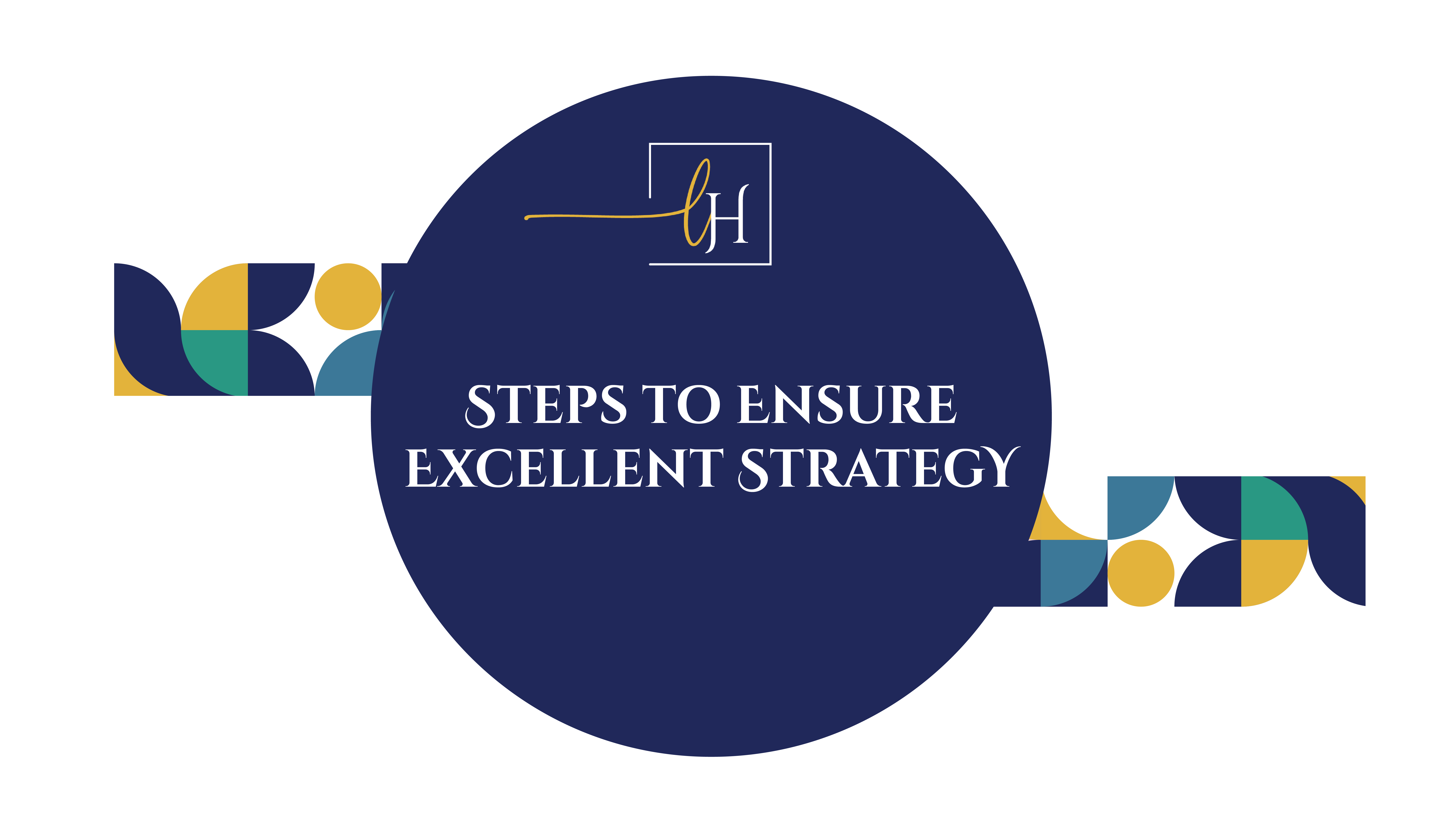Like any job, being a consultant has its own set of special challenges, but few as are difficult as the handoff of a project for someone else to execute. As much as I can ensure all the plans are mapped out and the strategy is solid, it doesn’t necessarily mean that everything will be smooth sailing to the finish line.
Why? A strategy is only as good as the plan to execute it, and actually putting it into action can be a challenge for most organizations.
For example, working with large scale organizations, like healthcare facilities, the sheer size of the team and scope of the project means executing the strategy requires a lot of planning and management.
Hospitals have a multitude of stakeholders to consider when executing a project. While the patients are the priority, the physician, nurses, admin staff, volunteers, and visitors must also be a priority. Hospitals are places that see people through some of the most stressful times in their lives, so it’s even more important for institutions to ensure that projects are executed with as few disruptions as possible to everyone who walks through the doors.
When creating a strategy, one of the key questions that needs to be addressed early on is “Is there someone who has the capability to execute on this strategy?”. Often times, the answer to that question is no. And that’s if someone even thought to ask that before committing to a project with no team in place to carry out the plans.
When you’re selecting a consultant to create your strategy, you may want to look for one that can project manage the implementation of the strategy. This person is often is the best person to execute the strategy as they understand the vision and nuances of everything involved. The key is making sure the execution plan is solidly in place before the project kickoff.
Here are five steps to ensuring that your strategy is executed with excellence:
Step One: Clearly Define Your Goal
Having a clearly defined goal all starts with ensuring everyone understands the difference between goals and objectives. Often these words are used interchangeably, but in the world of project management, they are very different.
A goal encompasses the broader aspirations and intent of the project and defines what you are working on accomplishing. Objectives are the road map of the project that defines the path you will follow and specific steps will accompany each objective.
Once everyone at the table understands the overarching goal you are trying to define, then you can move on to your questions.
- Why – Why are we doing the project, why is it important to the organization, why is it important to the team
- What – What are the issues this problem will solve? What are the deliverables? What is the criteria that will be used to judge our success or failure?
- Who – Who will this impact?
- How – How will you prioritize competing goals from stakeholders?
While the answers to of these types of questions are all key to defining the broader goal, the question of why is one that must be clearly addressed. We’ve all heard of WIIFM (what’s in it for me?) and having the answer to this is one of the most important pieces of information you should have ready. When it comes to getting buy-in from the stakeholders, knowing a project will impact them positively can be the difference between smooth sailing or fighting an uphill battle.
Step Two: Identify Your Key Stakeholders
Knowing who the key stakeholders are will allow you to engage them in the execution of the project. It’s not just looking at who will actually do the work, but it includes a holistic view of all the groups impacted by the project.
It’s always in the best interest of the project to seek out stakeholders know who have the greatest ability to influence change and ask them to be part of the team, even in a limited capacity. Engaging well-respected members of your organization who will champion the project can give it a higher profile and bring it to more people’s attention.
When determining who the key stakeholders for the project are, you need to look at every aspect of the organization. For example, in a hospital, it’s not just physicians and patients. There are the admin staff, volunteers, redevelopment and the building team and so on.
A broad-reaching project can trickle down to the day to day working lives of multiple people, so their input can be invaluable. Who better to tell you if your goals are actually feasible and to act as subject matter experts than the people who actually do the job? Your project team should be a diverse group that represents the interests of everyone affected by the project.
Employees want to feel valued and offering the opportunity to weigh in on a large project is the perfect time to show them their input matters.
Step Three: Define Each Stakeholder’s Role and Create Accountability
From the project manager to the subject matter experts, everyone needs to know exactly what their role entails and what responsibilities come with it.
One of the biggest pitfalls in project management occurs when people don’t know what they are supposed to be doing. Not understanding roles increases the likelihood of errors which in turn takes time away from valuable project work. All stakeholders should have a clear picture of the overarching goals and their own specific objectives to execute.
Every project needs a clear plan in place for how items get from inception to completion: who creates, who reviews and who approves each deliverable. Not everyone involved in the project has the same skillset or the same strengths, so the project manager should be leveraging their team members for what they do best.
With all of the hustle and bustle of getting a project to completion, one piece that often gets missed is coaching. Within the project, whether it’s the PM or project sponsor, there should be a point person identified as the go-to for coaching related issues. The job of the coach is to have regularly scheduled sessions with the team members as a means to coach them through stages of the project and ensure that everyone is consistently working towards the same end goals.
A consistent coaching schedule also allows for predictable check-ins, which may mean fewer questions on the fly as you have set times for touching base with team members.
Step Four: Identify Trends
Having data on current trends allows for the opportunity to create a “big picture” for company leaders and illustrate what aspects of the project are not working and may need to be re-examined for feasibility, impact or long-term outcomes. The road to project success is rarely without a few bumps, so it is critical to do due diligence and ensure you have a record of issues that may be recurring.
Things to be on the lookout for:
- Are multiple stakeholders having trouble with the same aspects of the project?
- Are you seeing repetitive issues from week-to-week?
- Do you have data to illustrate or back up these observations/findings?
This is another area where ensuring consistent coaching of team members can be a huge benefit. Whoever is functioning as the coach for the team can also use their sessions as an opportunity to see if there are any specific skillsets that the team as a whole needs to work on and if there is an opportunity to complete additional training to bolster up these skills.
Step Five: Ensure You Have Processes in Place for Sharing Data
On any project where you have multiple team members and stakeholders, you always run the risk of everyone not all having the same information. Whether you choose to do it simply through a spreadsheet where all project progress is tracked, or you have an application where everyone goes to input their updates, having everyone on the same page at the same time is a key component of a successful outcome.
Having processes in place for data sharing also eases the burden of the project manager; PMs function as the gatekeeper, so if the bulk of the information is only flowing in and out through them it creates an even bigger workload for them and increases the likelihood of missed communication between team members
Plan for the unexpected and have alternate scenarios. These need to be accessible to the team. Data sharing allows for transparency to all parties involved in the project and means you are not dependent on one person for all project information.
The next strategy your organizations creates, include a plan for the actual day-to-day execution of that project as part of the process, and ensure you have the team in place to implement. Without it, that strategy may end up on a dusty shelf and be long forgotten.
LHR Consultants has considerable experience developing strategy for healthcare, retail, and other organizations and offers project management services for flawless execution. To discuss your specific needs, contact us for a free consultation at [email protected]

